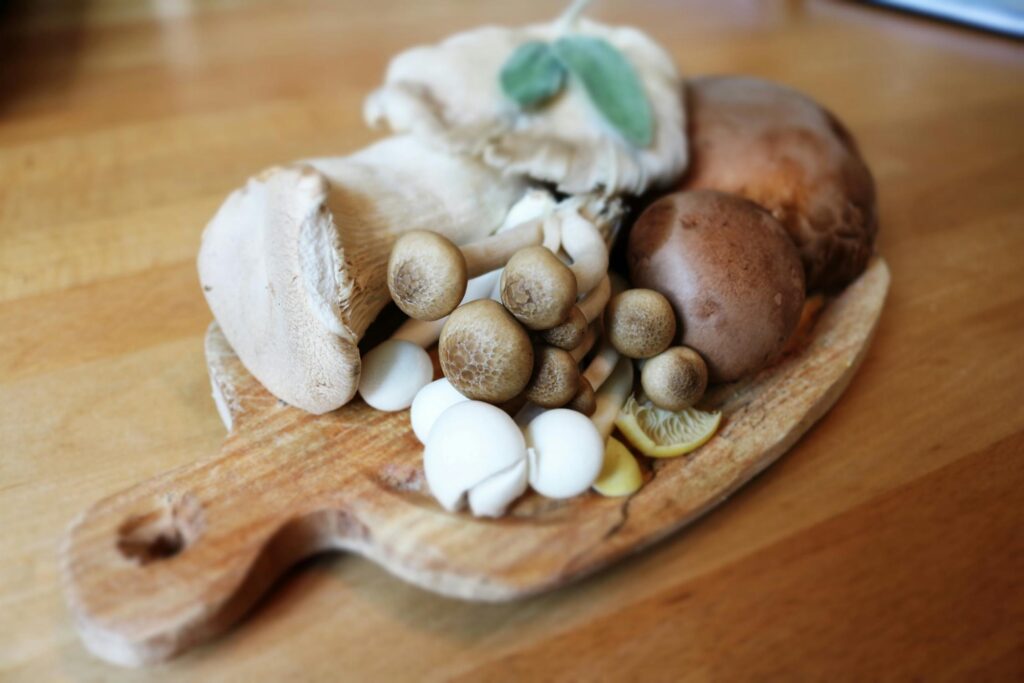Whether you’ve gotten into gardening as a hobby (and not just a chore that you have to do), or you’ve always had some interest in the science of biology, there’s a lot more to explore than simply growing pretty flowers and plants. In particular, mushroom cultivation has been becoming something of a trendy hobby. Here, we’re going to look into why people are starting to grow their own mushrooms, and how you could get started.

Why Cultivate Mushrooms?
Cultivating mushrooms can be an immensely rewarding hobby, offering a range of benefits from culinary delights to ecological improvements. Mushrooms are a versatile ingredient, adding unique flavors and textures to various dishes. For home cooks, growing your own mushrooms ensures a fresh and consistent supply of these delicious fungi. Additionally, mushrooms play a crucial role in soil health. They decompose organic matter, returning essential nutrients to the soil and improving its structure. This makes mushroom cultivation a beneficial practice for gardeners looking to enrich their soil naturally. Moreover, cultivating mushrooms enhances biodiversity in your garden, providing habitats and food for various organisms.
Choosing Your Spores
Selecting the right spores is the first critical step in mushroom cultivation. Spores are the fungal equivalent of seeds, and they determine the type of mushrooms you will grow. When choosing spores, consider factors such as your growing environment, climate, and the specific uses you have in mind for the mushrooms. Spores can be obtained from reputable suppliers in the form of spore syringes, spore prints, or ready-to-use spawn. Each type of mushroom has unique growing requirements, so research into topics like isolated syringe vs spore syringe cultivation is essential to ensure successful cultivation. Commonly cultivated mushrooms include oyster, shiitake, and button mushrooms, each with its own set of needs and characteristics.
Where to Grow Them
Mushrooms can be grown in a variety of settings, each with its own advantages and requirements.
Grow Kits: For beginners, mushroom grow kits are an excellent starting point. These kits come with pre-inoculated substrates and require minimal effort to set up. They are convenient and often produce reliable yields, making them ideal for those new to mushroom cultivation.
Woodchip Beds: Another method involves creating woodchip beds outdoors. This is suitable for species like wine cap mushrooms, which thrive on decomposing wood. Woodchip beds are easy to establish and maintain, providing a continuous supply of mushrooms over time.
Logs: Growing mushrooms on logs is a traditional method that works well for varieties such as shiitake and oyster mushrooms. This technique involves drilling holes into hardwood logs, filling them with spawn, and sealing the holes with wax. The logs need to be kept in a shaded, moist environment to encourage fungal growth.
Pasteurized Substrate: For indoor cultivation, using a pasteurized substrate like straw or sawdust is common. This method provides a controlled environment, reducing the risk of contamination. Pasteurized substrates are particularly effective for growing species like oyster mushrooms, which are less demanding and more forgiving to grow.
Maintaining Their Environment
Creating and maintaining the right environment is crucial for successful mushroom cultivation. Sterility is paramount, especially when starting from spores or spawn. Contaminants like mold and bacteria can outcompete mushroom mycelium, leading to failed crops. Ensuring clean hands, tools, and surfaces is essential during the inoculation and incubation phases.
Mushrooms also require specific conditions for optimal growth. Most mushrooms prefer a humid environment with good airflow. High humidity levels are necessary to prevent the mycelium from drying out. Using a humidifier or misting the growing area regularly can help maintain the needed moisture levels. Adequate airflow is important to avoid the buildup of carbon dioxide, which can inhibit mushroom growth. Ensure your growing area has proper ventilation, whether it’s an indoor grow tent or an outdoor bed.
Temperature is another critical factor. Different mushroom species have varying temperature preferences, so it’s important to match your chosen species with the appropriate growing conditions. For example, oyster mushrooms thrive in temperatures between 55-75°F, while shiitake mushrooms prefer slightly cooler conditions.
How to Harvest Mushrooms
Harvesting mushrooms at the right time ensures optimal flavor and texture. Most mushrooms should be harvested when the caps have fully opened but before the spores begin to drop. This stage is known as the “veil-breaking” stage, where the mushroom is mature but not overripe. To harvest, gently twist and pull the mushrooms from the substrate or use a clean knife to cut them at the base. It’s important to handle mushrooms carefully to avoid damaging the mycelium, which can continue to produce future flushes. Freshly harvested mushrooms should be stored in a cool, dry place and consumed or preserved within a few days to maintain their quality.
Popular Types of Mushrooms to Grow
Several types of mushrooms are popular among home cultivators due to their ease of growth and culinary value.
Oyster Mushrooms: Oyster mushrooms are a favorite for beginners due to their fast growth and forgiving nature. They can be cultivated on a variety of substrates, including straw, coffee grounds, and cardboard. Oyster mushrooms are versatile in the kitchen, with a delicate flavor that complements many dishes.
Shiitake Mushrooms: Shiitake mushrooms are prized for their rich, meaty flavor and are commonly grown on hardwood logs or sawdust blocks. They require a bit more patience, as they take longer to mature, but the reward is well worth the wait. Shiitake mushrooms are excellent in soups, stir-fries, and as a meat substitute.
Button Mushrooms: Also known as white mushrooms, button mushrooms are one of the most widely consumed mushrooms globally. They are typically grown in pasteurized compost or manure. Button mushrooms are versatile and can be used in a variety of culinary applications, from salads to pizzas.
Lion’s Mane Mushrooms: Lion’s mane mushrooms are known for their unique appearance and potential health benefits. They are grown on hardwood sawdust and require similar conditions to other wood-loving species. Lion’s mane mushrooms have a mild, seafood-like flavor and are often used in gourmet dishes.
Wine Cap Mushrooms: Also known as King Stropharia, wine cap mushrooms are well-suited for outdoor cultivation in woodchip beds. They are robust and can help improve soil health. Wine cap mushrooms have a slightly nutty flavor and can be used in various recipes.
Mushroom cultivation is a fascinating and fulfilling hobby that offers numerous benefits, from enhancing your culinary repertoire to improving garden soil health. Hopefully, the tips above will help you try this hobby!
Thank you for reading!

